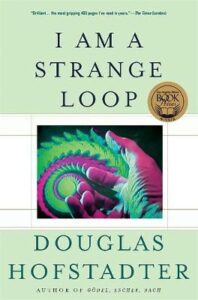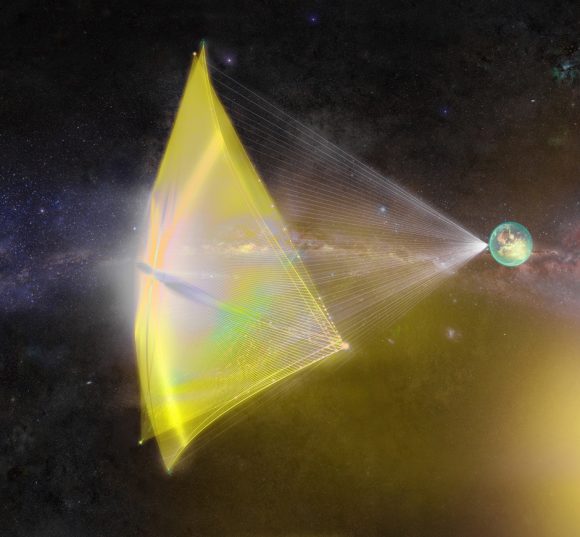
- Publisher: BASIC BOOKS
- Publication date: 07/08/2008
- Copyright Date: 2007
- Pages: 436
- ISBN-13: 978-0-465-03079-8
- ISBN-10: 0-465-03079-3
- Author: Douglas Hofstadter
I Am A Strange Loop by Douglas Hofstadter is the author’s attempt to explain his thoughts on where consciousness comes from and how it can emerge from unconscious and perhaps even inanimate components. The concept of a strange loop was originally developed in his 1979 book Gödel, Escher, Bach. In I Am A Strange Loop, Hofstadter seeks to better explain the concept and especially how it relates to the concept of the “I”, each of our own concepts of ourself, and our concepts of the “I” that lives inside of everyone else.
Before I try to explain this book, I will just say that you definitely should read it. It is not an easy read and you will likely get lost along the way, but it is worth it. Part philosophy, part mathematics, part science, part opinion, part almost metaphysics, this a deep and difficult book. If you ever thought about who that “I” is inside your head, or what makes you you, it is worth the time and effort to read this book, but be prepared for a struggle.
This is a fascinating book. I suspect that were Hofstadter to read this review, he would probably think that I nearly understood what he was talking about, but missed some key aspects of his explanations. I admit that is what I think as well. I found myself convinced by his descriptions, and to be honest, confused and feeling like I didn’t quite grasp everything he was trying to say. It was still well worth the time and energy needed to read the entire book (for the second time in my case). Keeping in mind, that this review came from my mind, and I am going to do a really poor job of explaining things…
Hofstadter makes a great case for how something like consciousness might emerge from the chaotic interaction of concepts and analogies and metaphors and categories in our brains. Strange loops are structures that loop back on themselves in unpredictable ways so that traversing the loop actually changes the way the loop traverses. Thinking about thinking changes not only what you are thinking about, but it changes the way you think and that spawns other thoughts that change how you think about thinking the next time you think about it.
The “I” that you think about as yourself is one of these strange loops (or perhaps several of these loops interacting in different ways). This “I” cannot be explained by the interaction of the lowest level neuron firings and individual cells and chemical interactions. At that low level, there is no “I”. You have to move up the levels into thoughts and categories and metaphors before you begin to see how the loopiness can bend back on itself to create a self.
He goes over some more mechanistic loops that he does not believe rise to the level of an “I”. For example, a thermostat loops back on itself. When it is too cold, it turns on the heat which makes it warmer which causes itself to turn off the heat. An internal feedback loop that changes itself as it changes. He posits that a simple organism, like a mosquito, is similarly mechanistic with only a few instincts driving their internal loops, fly around until hungry -> search for warm critter -> suck blood -> fly some more. Hofstadter does not think this type of feedback loop is ‘strange’ enough to generate the feeling of an “I” in these simple creatures, but as organisms become more complex, somewhere along the line, true consciousness creeps in, or should I say emerges from the feedback loops in those organisms.
He proposes that to really have an “I” inside a creature, that creature needs to have at least some understanding of higher level categories. The ability to fit together concepts that both separate one thing from another and also join together different individual items into shared concepts. Then those concepts can be sorted and ordered into higher level groupings and those into even higher level consolidation until somewhere along the line of conceptualization, you realize that there is something doing the conceptualizing…”I”. This almost seems like these increasingly complex concepts are rising in a straight line pattern from neuronal firings up to self consciousness, but the ideas themselves loop back on each other along the way and change themselves as they do. Ultimately, we are a combination of these patterns and ideas and metaphors and emotions all interacting in our brains and our environments.
He moves on from the “I” in a single brain to those that occur in other brains. Presumably, most people out there have their own “I” in their own brains, but Hofstadter would argue that, to some extent, the “I” that you associate with yourself lives partially in other brains as well. Especially as you get to know someone very well, a spouse, a sibling, a parent, etc., you incorporate some of the patterns associated with their “I” into your own. Hofstadter uses his late wife as an example of this, where they came to know each other so well, sometimes he feels like he is experiencing things using some of the same patterns that used to be primarily within her brain. In a sense, a diminished version of her “I” continues in his brain even though her brain has passed. Similarly our own thought patterns, our own “I”s live, at least a little bit in those we are closest to.
As I read through this review up to this point, I realize that I am not doing a very good job of explaining this so I will just tell you to read I Am A Strange Loop. I will also warn you again that this is not an easy read. For example, there was a large section of the book where Hofstadter tries to explain how Godel’s proof that mathematics could never be ‘complete’. This is another section where I almost understood what he was saying, but eventually had to just trust that he knew what he was trying to say. It is worth the effort to work your way through the 400+ pages of this book.
As you think about thinking about what he has written about it, it will modify the loops in your own brain. You might even get a small portion of Hofstadter’s “I” operating in that skull of yours.
____________
Strange book?
Plastiphobia – aka Plastivore by Matt Truxaw













Recent Comments